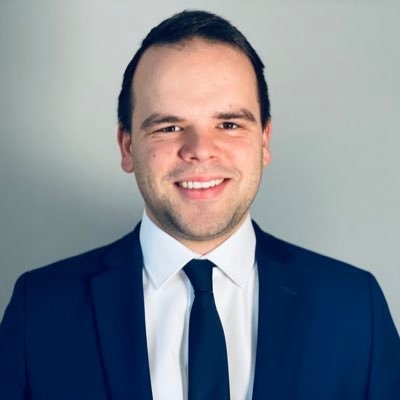“Silent Night” is one of the most popular Christmas carols in the world. In 2018, Pope Francis revealed that it is his favorite.
“St. Augustine once said: ‘He who sings prays twice.’ So where words come to an end, music comes in. And where music doesn't quite get anywhere, words can help again,” Johannes Zeinler explains.
Johannes Zeinler is teaching at the University of Music and Performing Arts in Vienna. Like many musicians, he has a special connection to “Silent Night.”
“‘Silent Night’ is by far the most emotional song that I have to play as a musician in the entire liturgical year. For me personally, there's no Christmas without ‘Silent Night.’ it's also somehow the highlight of the Christmas liturgy, you actually save it until the end of the Mass,” Zeinler shared.
Rudolf Gehrig, EWTN Vatican Bureau Producer, noted the special connection between “Silent Night” and Pope Francis:
“Silent Night is not only Pope Francis' favorite Christmas carol, but is famous worldwide and has already been translated into around 300 languages. Here, in this small town in Austria, it was played for the first time at Christmas in the year of 1818.”
Josef Bruckmoser is the Vice President of the “Silent Night Association.” He noted, “This place is very special because the St. Nicholas Church was here, where the song Silent Night was sung for the first time.”
Because the organ was broken, Fr. Joseph Mohr played “Silent Night” on guitar that night. The original St. Nicholas Church was demolished in 1910 after severe flood damage and rebuilt elsewhere. The “Silent Night Chapel” was built on the hill that was created from the rubble of the original church. Josef Bruckmoser and his Silent Night Society look after the legacy of the popular Christmas carol.
“Why don't you take us back to the night when the song was played for the first time here? What happened there?” asked Gehrig.
Bruckmoser explained, “We don't know exactly what happened there. But it is fact that somehow the organ wasn't working that day and that's why Joseph Mohr and Franz Xaver Gruber wrote this song together. Joseph Mohr had written the lyrics two years earlier in Mariapfarr, and so he went to the schoolteacher [Franz Xaver Gruber] and said: 'Can't you create a nice melody for it so we can sing it tonight?’”
Bruckmoser noted, “It wasn't very common back then to play the guitar in church. On the contrary, it was frowned upon because the guitar was seen as a secular instrument.”
Two hundred years later, Oberndorf is still proud to be the birthplace of this song.
“I love this song and I think I could listen to it my entire life!” Karoline Schink shared.
Karoline Schink runs the Oberndorf tourist office and organizes an Advent market every year, which takes place from November until Christmas Eve. Around 60,000 visitors come to the small town every year.
Schink further noted, “We have a lot of international guests, many Americans, New Zealanders, Australians too, and of course Europeans, mainly Germans. Yes, they just love our ‘Silent Night’ song!”
Gehrig asking why she thinks this is, Schink highlighted, “It is a song that connects us and makes us feel good. It is a song of peace. You can just feel that when you listen to it and when you sing it.”
“Yes, that is the basic message of this song, that with the birth of Jesus Christ, God has come close to us in Jesus, that peace has come and that Jesus is actually born anew in every person, especially when we fulfill the Gospel, which is a Gospel of peace,” Father Nikolaus Erber explained.
Father Nikolaus Erber is the parish priest of Oberndorf for 22 years now and knows that “Silent Night” also has a deep theological meaning.
Fr. Erber noted, “When you celebrate Christmas mass, you can hear that Joseph Mohr has summarized the texts of the Holy Night in this song. For example the Isaiah text about the peace that is promised. And the second reading says in the Letter to Titus: ‘the kindness and generous love of God our savior appeared.’ That is the background for this song, which he has used in the lyrics.”
Bruckmoser also highlighted, “‘Silent Night’ is considered a song for peace because it is widespread throughout the Christian world. And there are these stories from the World Wars, that on Christmas eve the soldiers on the frontline stopped shooting and sang Silent Night. In the Western world, just as we have the situation in Europe today with Russia's war against Ukraine, this carol is something that will probably play a role there on Christmas Eve.”
As the world faces the threat of war once more, a small chapel perched on a little hill in a quaint Austrian town stands as a timeless reminder of the true message of Christmas — with a song that has rung out for more than 200 years: “Christ the Savior is born!”
Adapted by Jacob Stein
Sign up for our newsletter here:

Rudolf Gehrig has been working for EWTN since 2013, among other things as a reporter, TV presenter, and producer. From 2019 to 2022 he was chief correspondent for German-speaking Europe at CNA Deutsch before moving to the Italian capital as a Rome correspondent and has since reported for EWTN Vatican and CNA Deutsch directly from the heart of the universal Church.







